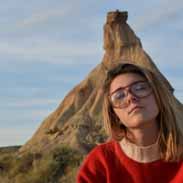NCLEX – Neurological Data Collection – LOA/LOC/VITALS/TEMP – Flashcards
Unlock all answers in this set
Unlock answersquestion
LOA
answer
level of alertness
question
LOA is assessed by:
answer
1. speaking to pt 2. gently touch pt 3. painful stimuli (sternal rub/supraorbital pressure/trapezius squeeze)
question
LOC
answer
Level of consciousness
question
LOC is assessed by assessing clients behavior:
answer
- confusion - delirium - unconsciousness - stupor - coma
question
Vital signs:
answer
- monitor BP/P changes which may indicate increased ICP
question
Elevated temp increases:
answer
metabolic rate of the brain
question
Elevated temp may indicate a dysfunction of the:
answer
- hypothalamus (or) - brain stem
question
A slow rise in temp may indicate:
answer
infection
question
Respiration types:
answer
- Cheyne-stokes - Neurologic hyperventilation - Apneustic - Ataxic - Cluster
question
Cheyne-Stokes is:
answer
rhythmic with periods of apnea
question
Chyene-Stokes can indicate:
answer
1. a metabolic dysfunction 2. dysfunction in the cerebral hemisphere 3. dysfunction in basal ganglia
question
Basal ganglia helps:
answer
regulate motor function
question
Basal ganglia participates in:
answer
1. motor output 2. limpic system input 3. oculomotor
question
Brain cells that make the brain are called:
answer
neurons
question
If brain neurons die the will:
answer
not be replaced
question
Neurogenic hyperventilation is:
answer
regular deep and rapid, sustained respirations - at a rate of 25 bpm
question
Neurogenic hyperventilation indicates a:
answer
disfunction in the : - low midbrain and - middle pons
question
Apneustic is:
answer
irregular respirations with pauses at the end of inspiration and expiration
question
Apneustic indicates a:
answer
dysfunction in the : - middle or - caudal pons
question
Cluster breaths are:
answer
clusters of breaths with irregularly spaced paused
question
Cluster breaths indicate a:
answer
dysfunction in the: - medulla - pons
question
Pupils test:
answer
P E R R L A
question
reactions to light are described as:
answer
- slow - brisk - fixed
question
Unilateral pupil dilation indicates:
answer
compression of the III Cranial Nerve (occulomotor)
question
Midposition fixed pupil indicates:
answer
midbrain injury
question
Pinpoint fixed pupil indicates:
answer
pontine damage - pontine (pertaining to the pons in the brainstem)
question
Motor function is:
answer
- muscle tone (strength and equality) - voluntary / involuntary movements - purposeful / nonpurposeful movements
question
Posturing indicates:
answer
deterioration of the condition
question
Types of posturing:
answer
1. Flexor (decorticate posturing) 2. Extensor (decerebrate posturing) 3. Flacid posturing
question
Flexor (decorticate posturing) is when a:
answer
- pt flexes one or both arms on the chest - may extend legs stiffly
question
Flexor (decorticate posturing) indicates a:
answer
- nonfunctioning cortex
question
Extensor (decerebrate posturing) is when a pt:
answer
- stiffly extends one or both arms - possibly the legs
question
Extensor (decerebrate posturing) indicates:
answer
- a brainstem lesion
question
Flaccid posturing is when a pt displays:
answer
- no motor response in any extremity
question
Babinski's Reflex is the:
answer
dorsiflexion of the ankle and great toe w.fanning of the other toes when firmly stroking the lateral aspect of the sole of the foot
question
A Positive Babinski test indicates:
answer
a disruption of the pyramidal tract
question
Corneal Reflex is the:
answer
loss of the blink reflex
question
Loss of corneal reflex indicates:
answer
a dysfunction of cranial nerve V (trigeminal)
question
Loss of the gag reflex indicates:
answer
a dysfunction of cranial nerves IX (glossalpharangeal) and X (vagus)
question
prone position
answer
lying face down
question
supine postion
answer
lying face up
question
fowler's position
answer
- head of the patient's bed is raised 18-20" above the level - knees also elevated.
question
semi-fowlers position
answer
- patient in an inclined position - upper half of the body raised - elevating the head of the bed approximately 30 degrees.
question
trendelenburg position
answer
laying flat on the back (supine position) with the feet higher than the head
question
reverse tredelenburg position
answer
laying flat on the back (supine position) with the head higher than the feet



